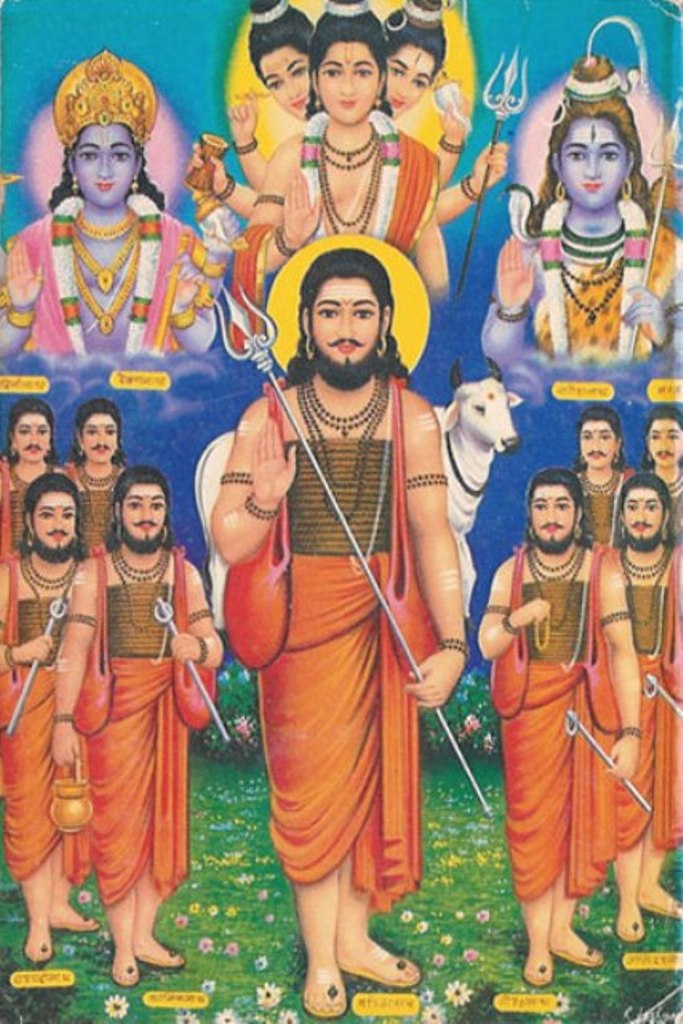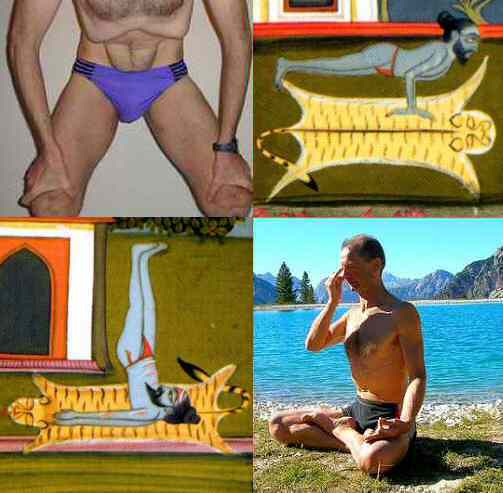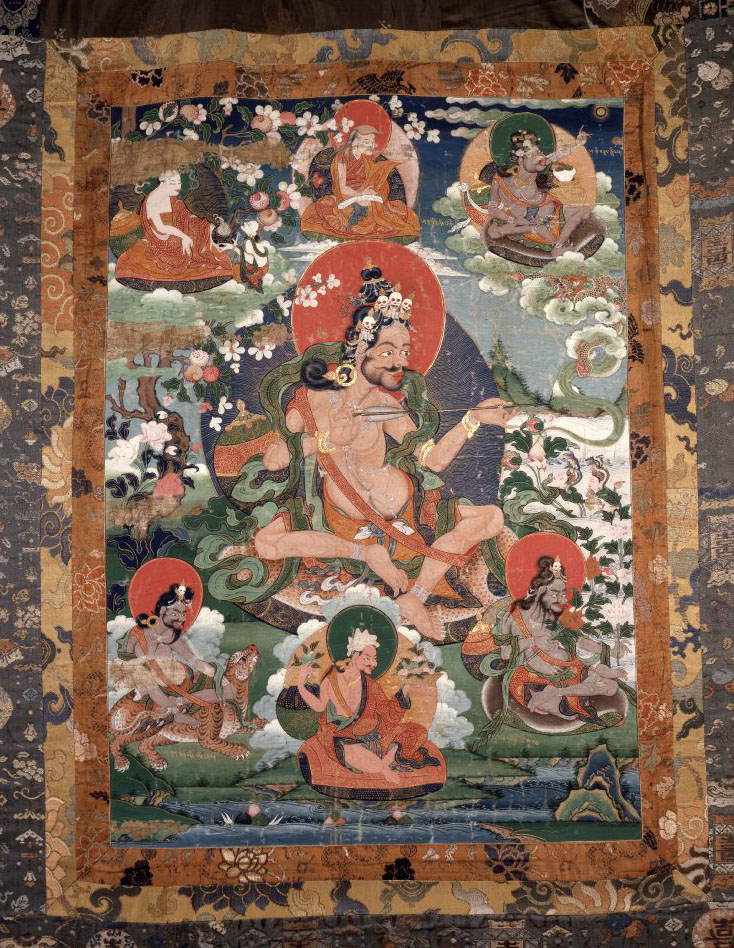|
Nath
Natha, also called Nath (), are a Shaivism, Shaiva sub-tradition within Hinduism in India and Nepal. A medieval movement, it combined ideas from Buddhism, Shaivism, Tantra and Yoga traditions of the Indian subcontinent.Natha: Indian religious sect Encyclopedia Britannica (2007) The Naths have been a confederation of devotees who consider Shiva as their first lord or guru, with varying lists of additional gurus. Of these, the 9th or 10th century Matsyendranatha and the ideas and organization mainly developed by Gorakhnath are particularly important. Gorakhnath is considered the originator of the Nath Panth. The Nath tradition has an extensive Shaivism-related theological literature of its own, most of which is ... [...More Info...] [...Related Items...] OR: [Wikipedia] [Google] [Baidu] |
Gorakhnath
Gorakhnath (also known as Gorakshanath (Sanskrit: ''Gorakṣanātha'') (Devanagari : गोरक्षनाथ / गोरखनाथ), c. early 11th century) was a Hindu yogi, mahasiddha and saint who was the founder of the Nath Hindu monastic movement in India. He is considered one of the two disciples of Matsyendranath. His followers are known as Jogi, ''Gorakhnathi'', ''Darshani'' or ''Kanphata''. He was one of nine saints, or Navnath, and is known in Maharashtra, India. Hagiographies describe him to be a person outside the laws of time who appeared on earth during different ages. Historians agree that Gorakhnath lived sometime during the first half of the 2nd millennium CE, but there is some disagreement about which century he lived. Estimates based on archaeological and textual evidence range from Briggs' estimate of the 11th to 12th century to Grierson's estimate of the 14th century. Gorakhnath is considered a ''Maha-yogi'' (or "great yogi") in Hindu tradition. He d ... [...More Info...] [...Related Items...] OR: [Wikipedia] [Google] [Baidu] |
Shaivism
Shaivism (, , ) is one of the major Hindu denominations, Hindu traditions, which worships Shiva as the Para Brahman, supreme being. It is the Hinduism#Demographics, second-largest Hindu sect after Vaishnavism, constituting about 385 million Hindus, found widely across South Asia (predominantly in South India, Southern India), Sri Lanka, and Nepal.Keay, p.xxvii. The followers of Shaivism are called Shaivas or Shaivites. According to Chakravarti, Shaivism developed as an amalgam of pre-Aryan religions and traditions, Vedic Rudra, and post-Vedic traditions, accommodating local traditions and Yoga, puja and bhakti. According to Bisschop, early shaivism is rooted in the worship of vedic deity Rudra. The earliest evidence for sectarian Rudra-Shiva worship appears with the Pasupata (early CE), possibly owing to the Origins of Hinduism, Hindu synthesis, when many local traditions were aligned with the Brahmanism, Vedic-Brahmanical fold. The Pāśupata movement rapidly expanded through ... [...More Info...] [...Related Items...] OR: [Wikipedia] [Google] [Baidu] |
Adi Natha
The Adinath Sampradaya was a sadhu sub-sect of the greater Nath tradition. Followers of this tradition were given Sannyasa diksha, thus renouncing householder life, and thereafter lived as naked sadhus. Believing that sadhus should live alone until they had attained the goal, they lived in caves, huts, ruined buildings, or empty houses, and always away from towns and villages. Reference to the Adinath Sampradaya is pointed out by Rajmohan Nath (1964) who lists them among the twelve traditional sub-sects of the Nath Sampradaya.Bandyopadhyay, P. K. (1992). ''Natha Cult and Mahanad''. page 73, Delhi, India: B.R. Publishing Corporation. The Adinath Sampradaya is also listed among the sub-divisions of Nath sects in the Census Report, Punjab, 1891, p. 114.Briggs, G. W. (1973). ''Gorakhnath and the Kanphata Yogis''. page 75, (Chart A) Delhi, India: Motilal Banarsidass Publishers. The last sadhu holding authentic guru status in the Adinath Sampradaya was Shri Gurudev Mahendranath, who ... [...More Info...] [...Related Items...] OR: [Wikipedia] [Google] [Baidu] |
Sampradaya
''Sampradaya'' (/ səmpɾəd̪ɑjə/,; ), in Indian-origin religions, namely Hinduism, Buddhism, Jainism, and Sikhism, can be translated as 'tradition', 'spiritual lineage', 'sect', or 'religious system'. To ensure continuity and transmission of dharma, various ''sampradayas'' have the Guru-shishya parampara in which a parampara or lineage of successive ''gurus'' (masters) and '' shishyas'' (disciples) serves as a spiritual channel and provides a reliable network of relationships that lends stability to a religious identity. Shramana is vedic term for seeker or shishya. Identification with and followership of ''sampradayas'' is not static, as ''sampradayas'' allows flexibility where one can leave one ''sampradaya'' and enter another or practice religious syncretism by simultaneously following more than one ''sampradaya''. '' Samparda'' is a Punjabi language term, used in Sikhism, for ''sampradayas''. Guru-shishya parampara Sampradayas are living traditions of both teac ... [...More Info...] [...Related Items...] OR: [Wikipedia] [Google] [Baidu] |
Matsyendranatha
Matsyendranātha, also known as Matsyendra, Macchindranāth, Mīnanātha and Minapa (early 10th century) was a saint and yogi in a number of Buddhism, Buddhist and Hinduism, Hindu traditions. He is considered the revivalist of hatha yoga as well as the author of some of its earliest texts. He is also seen as the founder of the natha ''sampradaya'', having received the teachings from Shiva. He is associated with Kaula (Hinduism), Kaula Shaivism. He is also one of the eighty-four mahasiddhas and considered the guru of Gorakshanath, another known figure in early hatha yoga. He is revered by both Hindus and Buddhists and is sometimes regarded as an incarnation of Avalokiteśvara. In the Siddhar tradition of Tamil Nadu, Matsyendranath is revered as one of the 18 Siddhars of yore, and is also known as Machamuni. The Kasi Viswanathar Temple in Thiruparankundram, Madurai, Tamil Nadu is home to his Jiva, Jeeva Samadhi. Early life Little is known about the life of Matsyendra: he is also ... [...More Info...] [...Related Items...] OR: [Wikipedia] [Google] [Baidu] |
Hatha Yoga
Hatha yoga (; Sanskrit हठयोग, International Alphabet of Sanskrit Transliteration, IAST: ''haṭhayoga'') is a branch of yoga that uses physical techniques to try to preserve and channel vital force or energy. The Sanskrit word हठ ''haṭha'' literally means "force", alluding to a system of physical techniques. Some hatha yoga style techniques can be traced back at least to the 1st-century CE, in texts such as the Hindu Itihasa, Sanskrit epics and Buddhism's Pali canon. The oldest dated text so far found to describe hatha yoga, the 11th-century ''Amritasiddhi, Amṛtasiddhi'', comes from a Tantra, tantric Buddhist milieu. The oldest texts to use the terminology of ''hatha'' are also Vajrayana Buddhist. Hindu hatha yoga texts appear from the 11th century onward. Some of the early hatha yoga texts (11th-13th c.) describe methods to raise and conserve bindu (vital force, that is, semen, and in women ''rajas –'' menstrual fluid). This was seen as the physical esse ... [...More Info...] [...Related Items...] OR: [Wikipedia] [Google] [Baidu] |
Matsyendranath
Matsyendranātha, also known as Matsyendra, Macchindranāth, Mīnanātha and Minapa (early 10th century) was a saint and yogi in a number of Buddhism, Buddhist and Hinduism, Hindu traditions. He is considered the revivalist of hatha yoga as well as the author of some of its earliest texts. He is also seen as the founder of the natha ''sampradaya'', having received the teachings from Shiva. He is associated with Kaula (Hinduism), Kaula Shaivism. He is also one of the eighty-four mahasiddhas and considered the guru of Gorakshanath, another known figure in early hatha yoga. He is revered by both Hindus and Buddhists and is sometimes regarded as an incarnation of Avalokiteśvara. In the Siddhar tradition of Tamil Nadu, Matsyendranath is revered as one of the 18 Siddhars of yore, and is also known as Machamuni. The Kasi Viswanathar Temple in Thiruparankundram, Madurai, Tamil Nadu is home to his Jiva, Jeeva Samadhi. Early life Little is known about the life of Matsyendra: he is also ... [...More Info...] [...Related Items...] OR: [Wikipedia] [Google] [Baidu] |
Tantra
Tantra (; ) is an esoteric yogic tradition that developed on the India, Indian subcontinent beginning in the middle of the 1st millennium CE, first within Shaivism and later in Buddhism. The term ''tantra'', in the Greater India, Indian traditions, also means any systematic broadly applicable "text, theory, system, method, instrument, technique or practice". A key feature of these traditions is the use of mantras, and thus they are commonly referred to as Mantramārga ("Path of Mantra") in Hinduism or Mantrayāna ("Mantra Vehicle") and Guhyamantra ("Secret Mantra") in Buddhism. In Buddhism, the Vajrayana traditions are known for tantric ideas and practices, which are based on Indian Tantras (Buddhism), Buddhist Tantras. They include Tibetan Buddhism, Indo-Tibetan Buddhism, Chinese Esoteric Buddhism, Japanese Shingon Buddhism and Nepalese Newar Buddhism. Although Southern Esoteric Buddhism does not directly reference the tantras, its practices and ideas parallel them. In Bud ... [...More Info...] [...Related Items...] OR: [Wikipedia] [Google] [Baidu] |
Vaishnavism
Vaishnavism () ), also called Vishnuism, is one of the major Hindu denominations, Hindu traditions, that considers Vishnu as the sole Para Brahman, supreme being leading all other Hindu deities, that is, ''Mahavishnu''. It is one of the major Hindu denominations along with Shaivism, Shaktism, and Smartism. Its followers are called Vaishnavites or ''Vaishnava''s (), and it includes sub-sects like Krishnaism and Ramanandi Sampradaya, Ramaism, which consider Krishna and Rama as the supreme beings respectively. According to a 2020 estimate by The World Religion Database (WRD), hosted at Boston University’s Institute on Culture, Religion and World Affairs (CURA), Vaishnavism is the largest Hindu sect, constituting about 399 million Hindus. The ancient emergence of Vaishnavism is unclear, and broadly hypothesized as a History of Hinduism, fusion of various regional non-Vedic religions with worship of Vishnu. It is considered a merger of several popular non-Vedic theistic traditio ... [...More Info...] [...Related Items...] OR: [Wikipedia] [Google] [Baidu] |
Hinduism
Hinduism () is an Hypernymy and hyponymy, umbrella term for a range of Indian religions, Indian List of religions and spiritual traditions#Indian religions, religious and spiritual traditions (Sampradaya, ''sampradaya''s) that are unified by adherence to the concept of ''dharma'', a Ṛta, cosmic order maintained by its followers through rituals and righteous living, as expounded in the Vedas. The word ''Hindu'' is an exonym, and while Hinduism has been called the oldest religion in the world, it has also been described by the modern term ''Sanātana Dharma'' () emphasizing its eternal nature. ''Vaidika Dharma'' () and ''Arya dharma'' are historical endonyms for Hinduism. Hinduism entails diverse systems of thought, marked by a range of shared Glossary of Hinduism terms, concepts that discuss God in Hinduism, theology, Hindu mythology, mythology, among other topics in Hindu texts, textual sources. Hindu texts have been classified into Śruti () and Smṛti (). The major Hin ... [...More Info...] [...Related Items...] OR: [Wikipedia] [Google] [Baidu] |
Shiva
Shiva (; , ), also known as Mahadeva (; , , Help:IPA/Sanskrit, [mɐɦaːd̪eːʋɐh]) and Hara, is one of the Hindu deities, principal deities of Hinduism. He is the God in Hinduism, Supreme Being in Shaivism, one of the major traditions within Hinduism. Shiva is known as ''The Destroyer'' within the Trimurti, the Hinduism, Hindu trinity which also includes Brahma and Vishnu. In the Shaivite tradition, Shiva is the Supreme Lord who creates, protects and transforms the universe. In the goddess-oriented Shaktism, Shakta tradition, the Supreme Goddess (Devi) is regarded as the energy and creative power (Shakti) and the equal complementary partner of Shiva. Shiva is one of the five equivalent deities in Panchayatana puja of the Smarta Tradition, Smarta tradition of Hinduism. Shiva has many aspects, benevolent as well as fearsome. In benevolent aspects, he is depicted as an Omniscience, omniscient yogi who lives an Asceticism#Hinduism, ascetic life on Kailasa as well as a house ... [...More Info...] [...Related Items...] OR: [Wikipedia] [Google] [Baidu] |
Sahaja
Sahaja ( ) is spontaneous liberating knowledge in Indian Tantric and Tibetan Buddhist religions. Sahaja practices first arose in Bengal during the 8th century among yogis called Sahajiya siddhas. Ananda Coomaraswamy describes its significance as "the last achievement of all thought", and "a recognition of the identity of spirit and matter, subject and object", continuing "There is then no sacred or profane, spiritual or sensual, but everything that lives is pure and void." Etymology The Sanskrit nd the Tibetan, which precisely follows itliterally means: 'born or produced together or at the same time as. Congenital, innate, hereditary, original, natural (...by birth, by nature, naturally...)'. Etymologically, means 'together with', and derives from the root , meaning 'to be born, produced, to occur, to happen'. The Tibetan is an exact etymological equivalent of the Sanskrit. means 'together with', and means 'to be born, to arise, to come about, to be produced'. The Ti ... [...More Info...] [...Related Items...] OR: [Wikipedia] [Google] [Baidu] |










